Related Research Articles
The history of the Royal Canadian Air Force begins in 1914, with the formation of the Canadian Aviation Corps (CAC) that was attached to the Canadian Expeditionary Force during the First World War. It consisted of one aircraft that was never called into service. In 1918, a wing of two Canadian squadrons called the Canadian Air Force (CAF) was formed in England and attached to the Royal Air Force, but it also would never see wartime service. Postwar, an air militia also known as the Canadian Air Force was formed in Canada in 1920. In 1924 the CAF was renamed the Royal Canadian Air Force (RCAF) when it was granted the royal title by King George V. The RCAF existed as an independent service until 1968.
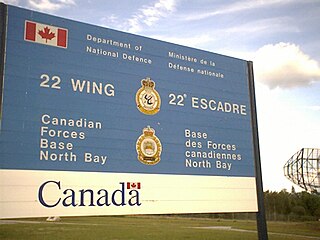
Canadian Forces Base North Bay, also CFB North Bay, is an air force base located at the City of North Bay, Ontario about 350 km (220 mi) north of Toronto. The base is subordinate to 1 Canadian Air Division, Winnipeg, Manitoba, and is the centre for North American Aerospace Defense Command (NORAD) operations in Canada, under the Canadian NORAD Region Headquarters, also in Winnipeg. It is also home to the 1 Air Force, Detachment 2 of the United States Air Force.

Shearwater Heliport, formerly known as Canadian Forces Base Shearwater and commonly referred to as CFB Shearwater and formerly named HMCS Shearwater, is a Canadian Forces facility located 4.5 nautical miles east southeast of Shearwater, Nova Scotia, on the eastern shore of Halifax Harbour in the Halifax Regional Municipality. Following a base rationalization program in the mid-1990s, the Canadian Forces closed CFB Shearwater as a separate Canadian Forces base and realigned the property's various facilities into CFB Halifax. These include:
This is a list of aviation-related events from 1920:
This is a list of aviation-related events from 1919:
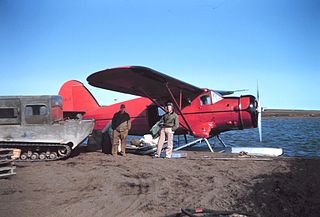
Bush flying refers to aircraft operations carried out in the bush. Bush flying involves operations in rough terrain where there are often no prepared landing strips or runways, frequently necessitating that bush planes be equipped with abnormally large tires, floats, skis or any other equipment necessary for unpaved runway operation. It is the only viable way of delivering people and supplies into more difficult to reach, remote locations.

Ottawa/Rockcliffe Airport or Rockcliffe Airport, a former military base, is a non-towered airport located on the south shore of the Ottawa River, 4 nautical miles northeast of Downtown Ottawa, Ontario, Canada. The airport is the home of the Canada Aviation and Space Museum, which owns the field, and is used and maintained by the Rockcliffe Flying Club.

RCAF Station High River was a station of the Royal Canadian Air Force (RCAF) located at High River, Alberta, Canada.

Canadian Forces Base Gander, is a Canadian Forces base located in Gander, Newfoundland and Labrador. It is operated as an air force base by the Royal Canadian Air Force and is home to search and rescue operations that cover a vast swath of the western North Atlantic and southern Arctic and a Canadian Coastal Radar station amongst other things. It is home to 9 Wing Gander.
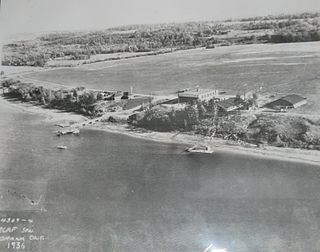
Canadian Forces Base Rockcliffe is a former Canadian Forces Base located in the eastern part of Ottawa, Ontario, now used for Ottawa/Rockcliffe Airport and the Canada Aviation and Space Museum.

The Air Board was Canada's first governing body for aviation, operating from 1919 to 1923. The Canadian government established the Air Board by act of Parliament on June 6, 1919, with the purpose of controlling all flying within Canada. Canada was the first country to legislate and implement rules governing the entire domain of aviation.

Fairchild Aircraft Ltd. was an aircraft manufacturer active at Longueuil, Quebec, Canada in the period 1920–50. It served as a subsidiary of the Fairchild Aircraft company of the United States.
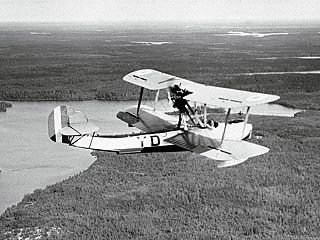
The Canadian Vickers Vedette was the first aircraft designed and built in Canada to meet a specification for Canadian conditions. It was a single-engine biplane flying boat purchased to meet a Royal Canadian Air Force (RCAF) demand for a smaller aircraft than the Vickers Viking with a much greater rate of climb, to be suitable for forestry survey and fire protection work. The type went on to have a long and distinguished career in civil operations in Canada. Most of the topographical maps in use in Canada today are based on photos taken from these aircraft.

The Curtiss HS was a single-engined patrol flying boat built for the United States Navy during World War I. Large numbers were built from 1917 to 1919, with the type being used to carry out anti-submarine patrols from bases in France from June 1918. It remained in use with the US Navy until 1928, and was also widely used as a civil passenger and utility aircraft.

RCAF Station Jericho Beach, originally known as the Vancouver Air Station, was one of the first Canadian air stations opened by the Canadian Air Board. Jericho Beach is located in Vancouver, British Columbia.
The Canadian Air Force (CAF) was the initial, non-permanent peacetime air force formed by Canada after the First World War. When the Air Board was formed in 1919 to manage Canadian aviation, one of its responsibilities was air defence; the CAF was formed to meet this responsibility. The CAF was officially retitled the Royal Canadian Air Force (RCAF) on 12 March 1923, and then dissolved on 31 March 1924 to allow the permanent Royal Canadian Air Force (RCAF) to be formed the following day.
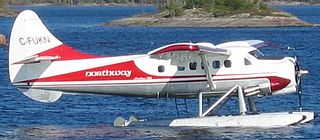
The history of aviation in Canada begins with the first manned flight in a balloon at Saint John, New Brunswick in 1840. The development of the aviation industry in Canada was shaped by the interplay of Canadian national ambitions, national and international politics, economics, and technology. Experimental aviation started in Canada with the test flights of Bell's Silver Dart in 1909, following the epochal flight of the Wright Brothers in 1903. The experimental phase gave way to use of aircraft in warfare. Many Canadians served in the British Royal Flying Corps and Royal Air Force during the First World War.

The Imperial Gift was the donation of aircraft from surplus stocks in Britain after World War I to the dominions of the British Empire: Canada, Australia, New Zealand, South Africa and India. On 29 May 1919, the Cabinet of the United Kingdom agreed to give 100 aircraft to the dominions in addition to replacements for aircraft donated to Britain during the war. These aircraft formed the core of newly established air forces in several dominions.
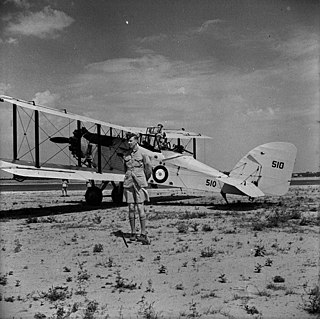
No. 3 (Bomber) Squadron was a Royal Canadian Air Force (RCAF) squadron active during the late 1930s.

The Morley Air Station was a station of the Canadian Air Board's Flying Operations Branch located near Morley, Alberta on the Stoney 142, 143, 144 Reserve. Morley was one of five stations established by the Flying Operations Branch during its first summer of operations in 1920. The station operated Airco DH.4 and Airco DH.9A aircraft on forest fire patrols along eastern edge of the Rocky Mountains. The Morley air station was the first air station established in Canada for the purpose of flying forest patrols.
References
- 1 2 3 4 5 Hitchens, Wing Commander F.H. (August 1972). Canadian War Museum Paper No. 2: Air Board, Canadian Air Force and Royal Canadian Air Force. Ottawa: Canadian War Museum.
- 1 2 3 4 Shaw, S. Bernard (2001). Photographing Canada from Flying Canoes. Burnstown: General Store Publishing House.
- 1 2 3 4 5 Griffin, John A.; Stachiw, Anthony L. (2009). Early Canadian Military Aircraft Acquisitions, Dispostions, Colour Schemes & Markings Volume 1 Aircraft taken on strength through 1920. Kitchener: Aviaeology.